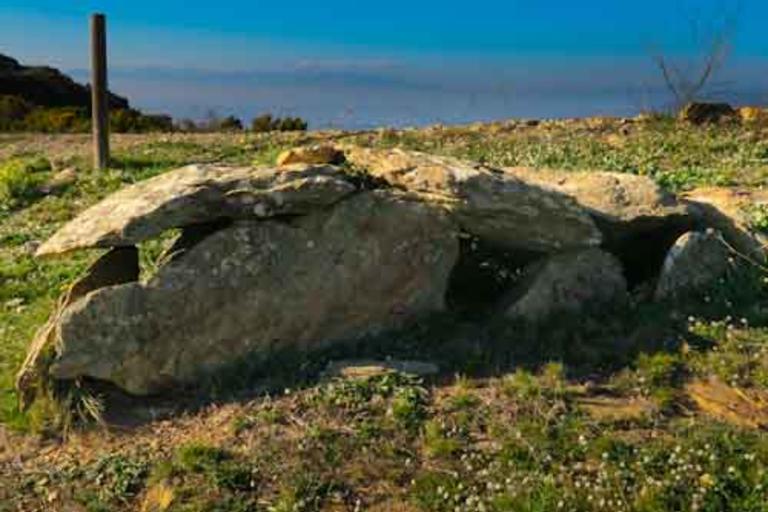
Introduction
(4700-3400 BCE - Middle Neolithic)
The megalithic, cist-type tomb with a mound, formed by a long rectangular chamber, partially excavated from the rock and bounded by several flat slabs of slate, oriented along the north-south axis. The current cover is not the original, which probably would have been a huge slab that enclosed the entire space of the chamber. The mound, made of slate slabs of various sizes and earth, surrounded and covered the entire structure.
This tomb was discovered and excavated by the archaeologists Pere de Palol and Miquel Oliva in 1946. During the 1970s, the monument was badly restored and it was not until 1986 that it was identified and excavated properly. Notable is the find made within the chamber of a disk made of schist, encased in the rock, the function of which is unknown but is believed to have a ritualistic meaning. This is a characteristic element of the megalithic period in the Empordà region.
Also known as the Coll de Fitor megalith, the name of the site where it is located, it is the most well-preserved cist in the Montjoi necropolis, a burial area which has been placed within the initial phase of the megalithic period in the Empordà region, around the fifth and the start of the fourth millennium BCE.
Follow the footpath by the side of the sea. NOT THE TRACK.